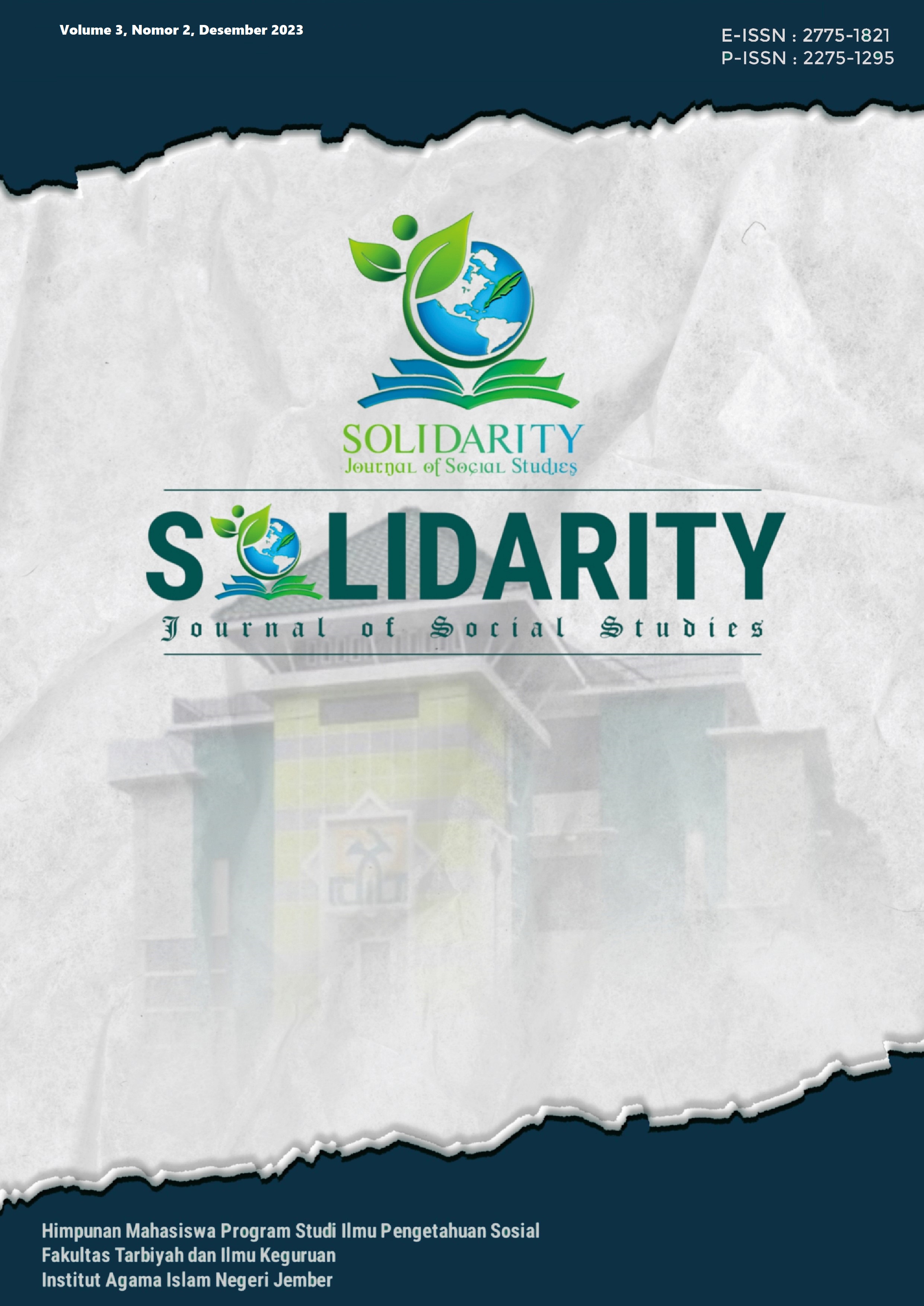CULTURAL DEVELOPMENT IN ENDHOG-ENDHOGAN TRADITION IN TAMANSARI VILLAGE, TEGALSARI DISTRICT, BANYUWANGI REGENCY
PERKEMBANGAN BUDAYA DALAM TRADISI ENDHOG-ENDHOGAN DI DESA TAMANSARI, KECAMATAN TEGALSARI, KABUPATEN BANYUWANGI
DOI:
https://doi.org/10.35719/solidarity.v3i2.95Keywords:
meaning, symbol, value, Endhog-endhogan TraditionAbstract
Banyuwangi is the birthday of the Great Prophet Muhammad S.A.W, the second celebration after Eid al-Fitr.In the celebration chanted the story of the Prophet, commonly called Barzantsi; there is a special event in banyuwangi to celebrate the Prophet's Mawlid accompanied by Endhog flowers or Endhog Endhogan. Endhog flowers are decorations in the form of eggs placed in baskets made of bamboo, decorated with various decorations, and topped with roses. One of the most lively areas is Tamansari Village in Tegalsari District, Banyuwangi Regency. This study aims to determine the meaning and philosophical value of the endhog-endhogan tradition in social and religious life and the development of the Tamansari Village, Tegalsari District, Banyuwangi Regency community. This research uses qualitative methods with phenomenological research types. The theory used is the theory of sociologist Emile Durkheim, namely functionalism, which states that tradition is a belief system related to sacred objects and has a social function. The data sources in this study are the Head of Tamansari Village, Community Leaders (Kyai/Ustadz), and community members of Tamansari Village who carry out endhog-endhogan traditions. Observation, interviews, and documentation are used to carry out data collection techniques. The data obtained in the field is analyzed using descriptive analysis, describing the data through words and drawing conclusions. The results revealed that the sandhog and hogan tradition had been carried out in Tamansari Village, Tegalsari District, Banyuwangi Regency, since 1981. Holding the Endhog-Endhogan tradition preserves local culture and increases people's love for the Prophet SAW. In the Endhog tradition, many philosophical meanings are embodied as symbols. The symbol comprises bamboo stems, flowers, soul mates, and eggs. The values contained in this tradition are moral and educational, religious or spiritual values, educational values, and social values. The implementation of the Endhog tradition in Banyuwangi is included in PHBI's agenda.
References
Albab, U. M. (2022). Filosofi Telur Itik dalam Peringatan Maulid Nabi di Banyuwangi.
Merdeka.Com.
Appadurai, A. (1996). Modernity at Large: Cultural Dimensions of Globalization. U of Minnestofa Press, 1(3).
Arikunto, & Suharsimi. (2010). Prosedur Penelitian Suatu Pendekatan Praktik. Rineka Cipta.
Creswell, J. (2010). Research Design : Pendekatan Metode Kualitatif, Kuantitatif, dan Campuran.
Pustaka Belajar.
Farid, M. (2018). Fenomenologi Dalam Penelitian Sosial. Prenadamedia Group.
II, F. I. F. I. (1996). Ruh Islam Dalam Budaya Bangsa, Aneka Budaya di Jawa. Yayasan Festival Istiqlal.
Mahmud, S. (2004). Sejarah Peringatan Maulid Nabi Muhammad SAW. CV, Usrah.
Mutowif, A. (2019). Internalisasi Nilai Islam Dengan Budaya Lokal. CV.Madza Media.
Nazir, M. (1986). Metode Penelitian. PT Remaja Rosdakarya.
Oktavia, N. (2015). Sistematika Penulisan Karya Ilmiah. Deepublish.
Downloads
Published
How to Cite
Issue
Section
License
Copyright (c) 2023 Noer Diana Kamilia

This work is licensed under a Creative Commons Attribution-ShareAlike 4.0 International License.







